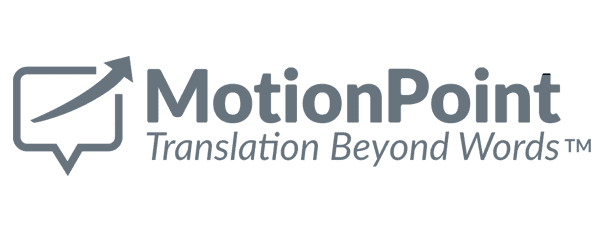




Simply put, website localization is the process of refining website content through culture, language, and flow to provide the most valuable and relevant experience for users.
Most people equate "localization" with "translation," but accurate website localization is far more nuanced than simply displaying words in a new language. We're going to walk you through how to execute a powerful and authentic localization strategy.
Localiser un site Web fait appel à cinq éléments clés :
As you expand to international markets with your digital presence, one thing becomes abundantly clear: local markets expect a website experience as fantastic as the one on your flagship site.
It can be tempting to solve the website localization problem with a simplified microsite that takes your company's essential information, translates it into the local language, and provides an abridged experience to those users. But users regularly abandon websites that don't provide consistent language experiences or deliver compromised experiences in favor of a simplified approach.
As you extend your global reach into new markets, strike the right balance with powerful website translation that doesn’t compromise the user experience.
Êtes-vous prêt(e) à localiser votre site Web ? Voici les questions que vous devez vous poser pour établir de solides bases :
Creating localized content for your website is vital for many reasons. A localization strategy focuses on tailoring your website content through subject matter, keywords, and languages to connect with a localized market instead of a global one. Your graphics, the language you write, the topics you cover, and everything else will be specific to a localized market. You can create as many localized strategies as possible based on your target areas.
A common problem many businesses face is treating the localization process as a one-fits-all process. Instead, develop a localization strategy specific to your brand, project, business niche, and target market. When working out a localization strategy, you'll want to have answers to such questions as:
Setting up a solid localization workflow for your website involves many steps, such as website translation, image adaptation, and testing. It also calls for continuous execution of these steps because societal cultures and preferences are never static. Therefore, if you’re embarking on localization for your website, it pays to have a proper workflow backed by powerful automation tools to help you localize your website quickly and adaptively.
Localization workflow and quality assurance (QA) processes ensure you'll have accurate translations, initially and as your business needs to make updates or changes to content. Depending on the size and scale of the website, the localization process can involve collaborators such as web developers; product managers; copywriters, marketers, translators; and QA specialists and reviewers.
Various translation and localization solutions exist to support the implementation of the localization process, including:
Incorporating localization into your website development in an agile manner has several advantages. First, translations aren't just done once and are delivered at the end of the development cycle. Instead, they are translated as web pages, and content is being developed. This signifies that once new updates are released, translators or localization teams can simultaneously work on the localization of the changes happening on your website.
After completing your translations, you'll need to copy the translated files into your code structure. Quality translation platforms will allow you to pull the translated files ready for use into your application. The next step is to import these translated files into your application and deploy your newly localized website or application with the completed translations.
Whether it's an in-house server or folders in the cloud, every team works with some kind of file-sharing service. Localization work is tied to private information, so a secure server is necessary. Using a file management tool with version control leads to great benefits. Version control shows a revision log and gives you access to the older versions of the same file. It then saves collaborators from creating several versions of the same file to track changes and allows the user to compare different versions. Version control may also keep your old work in case of corruption or loss of the file in its current version.
Search Engine Optimization (SEO) increases visibility when people search for your website on Google. The better your website's visibility in search results, the greater your chances of people clicking and redirecting your website. In addition, the more new people on your website called organic traffic, the more people are likely to avail of your services or products.
Multilingual SEO is important because Google is different in every language. Therefore, it's critical to optimize search results differently on each search engine in whichever country you're targeting your localization, such as Google.co.uk or Google.com.au. Doing so will rank your search results on every type of search engine available in that country.
Translation alone won't adjust everything on the page. Therefore, a strong SEO strategy also includes localizing various elements to satisfy search intent properly. These elements include:
Localization management tools give you visibility into every aspect of your localization projects. This includes tracking the progress of each project, which tasks have been assigned to which stakeholders, analytics on translation quality and the performance of individual translators, and measuring the results of your localization efforts in terms of key performance indicators (KPIs).
While your translation tools do the heavy lifting of translating your website content for you, you can localize your website more efficiently and effectively by:

When you localize, in-market visitors to your site should be able to experience all the elements, concepts, and content that they use in their everyday lives.
That means ensuring your content uses the culturally relevant, preferred terminology, phrases, and slang of your local customers. Literal translations can be obviously out of touch with the local culture and compromise things like SEO and brand integrity.
Cette approche inclut aussi la localisation du contenu multimédia. For example, having images, video content, and PDFs appearing in the correct local language can enhance brand credibility and encourage interaction with content.
Comme toujours, le diable se cache dans les détails. Make sure important content on your site is digestible and usable in your global customers' language-from localized currency and payment options to units of measurement, address formats, and contact information. With these critical localizations in place, your customers won't miss a beat while spending time on your site.
Great website localization means thinking beyond the site to the digital assets, content, and channels that make up your international digital presence.
Avant toute chose, prenez en compte la façon dont les utilisateurs locaux découvriront votre site. Make sure regional search engines know about your new local website so you're easy to find in search results. Working with a website translation partner that knows SEO can give you an advantage, too, by thinking beyond localized keywords and leveraging advanced technologies like hreflang. This ensures that the translated version of your website correctly displays in your customers' local search engine results.
The most advanced providers can help with powerful user preference-detection technology for your site that can seamlessly welcome first-time visitors in the language they’re likely to speak and help them find the localized site that best fits their needs.
And make sure your omnichannel content-such as email campaigns, social media posts, and offline assets-is translated, too. Work with a partner that can help you find and localize this content and ensure that it's connected to your digital presence in all the right ways.
As you consider ways to adapt your company’s website for local markets, look for solutions that deliver accurate and authentic website translations and offer engagement-boosting localizations.
Managing website localization well requires having world-class translators, powerful technology that can deliver the right localized content to the right audiences, and powerful workflows and translation management tools that make it easy to publish, track, and update your customized content.
Votre activité internationale mérite la meilleure présence numérique possible. Work with a partner that can elegantly employ website translation and localization to ensure straightforward, effective, and relatable content for every market where you do business.
De MotionPoint services de localisation de sites Web are ideal for resource-conscious organizations. MotionPoint translates, localizes, and optimizes the world's most important websites, mobile apps, web applications, and omnichannel content-all with minimal customer effort.